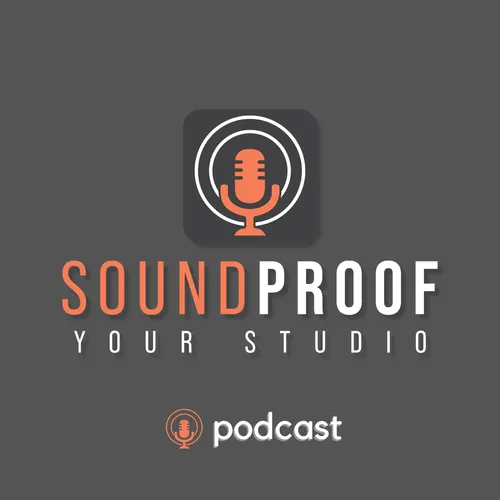Play Drums 24/7 — This Basement Is 100% Soundproof (Part 2)
- Author
- Wilson Harwood
- Published
- Mon 25 Aug 2025
- Episode Link
- https://www.soundproofyourstudio.com/podcasts/soundproof-your-studio/episodes/2149077756
📅 Book Your Free Call: https://www.soundproofyourstudio.com/Step1
FREE Soundproofing Workshop: https://www.soundproofyourstudio.com/workshop
Imagine walking into your basement, sitting behind your drum kit, and playing as loud as you want, day or night, without a single complaint from neighbors or family upstairs.
That’s exactly what we achieved in this project. In Part 1, we shared how we built the structure and sound isolation system that made this drummer’s dream possible.
Now in Part 2, we’ll take you behind the scenes of the electrical design, HVAC system, and acoustic treatment, the finishing touches that turned this basement into a fully functional, professional-grade studio.
Electrical Design That Protects Sound Isolation
A studio isn’t just walls and insulation, the electrical plan can make or break your soundproofing.
Instead of cutting holes in the ceiling for recessed lights (a sound isolation disaster), we installed acoustic clouds with backlighting powered by Philips Hue strip lights. These clouds not only light the space beautifully but also prevent sound leaks through the ceiling.
We also designed a star grounding system, a pro-level electrical setup that minimizes ground loop hum and ensures clean audio. Inspired by Rod Gervais, this approach isolates the audio circuit with a dedicated ground path, creating a more reliable and noise-free recording environment.
Most electricians don’t see this every day, but with the right plan, they can easily make it happen.
HVAC: Quiet, Comfortable, and Code-Compliant
Here’s a truth every musician should know:
👉 Every soundproof room must have a dedicated ventilation system.
For this basement, we used AC Infinity fans paired with custom baffle boxes. These boxes silence the airflow while keeping fresh air moving in and stale air moving out. By separating intake and exhaust ducts at least six feet apart, the system ensures effective air exchange without sound bleed.
A mini-split unit handles heating and cooling, while the fans manage air circulation. This combination keeps the room comfortable, breathable, and completely isolated, without the roar of a noisy fan in the background.
Acoustic Treatment: Balanced and Musical
Once the room is soundproofed, the next step is shaping the sound inside. For this client, we built an acoustic design that feels professional, natural, and inspiring to play in.
Bass Traps: Floor-to-ceiling GIK Soffit Traps control low-end buildup in the corners.
Acoustic Clouds: Positioned over the drums and mix area to tame reflections.
Diffusion Panels: Installed along the back wall to add spaciousness and prevent dead, flat sound.
Custom Panels: Clear build instructions for the client, or an option to order professionally made panels for convenience.
The result? A studio that’s tight where it needs to be, but still lively, perfect for both recording and practicing.
Why Every Detail Matters: Electrical, HVAC and Acoustics. These aren’t “extras”—they’re the final puzzle pieces that transform an isolated room into a world-class creative space.
That’s why we provide:
Detailed plans and diagrams for contractors
3D renderings so clients can see the finished space before building
A complete materials list to avoid delays and confusion
By eliminating guesswork, we make sure every studio not only meets technical standards but also feels inspiring to play in.
Ready to Build Your Own Soundproof Space?
If you’re dreaming of a studio where you can play, record, and create without limits, here are two ways we can help:
🎧 DIY Builder?
Watch my Free Soundproofing Workshop—a 30-minute deep dive into the exact principles for designing your own isolated studio, home office, or theater:
📐 Want Professional Plans?
If you’d rather have custom drawings and acoustic designs tailored to your space, book a Clarity Call today:
👉 Book Your Clarity Call
